Best SSD for gaming – the top SSDs in 2021
The best SSD for gaming isn’t only great for loading into your match quickly, it’s also one of the best ways to improve your entire desktop experience. Drop it alongside one of the best graphics cards and best gaming CPUs and you’ll have a rig that’s about as snappy as you can get, especially if you install your operating system on the SSD. Not only will your boot times, Windows UI interactions, and app load times be significantly improved, but also your game and map load times, meaning you won’t have to wait as long to start getting those CS:GO frags!
And solid-state drives are no longer just the preserve of the PC gaming elite – even the best M.2 SSDs are now more affordable than they’ve ever been. And faster, too. Don’t worry about compatbility – any of the best gaming motherboards in 2021 will have an M.2 slot – the days of searching for a motherboard with an M.2 slot are gone. The SSD vs. HDD war is pretty much over, at this point: NVMe SSDs are now so affordable that HDDs have become all but redundant. The top of the tech tree is still dominated by Samsung SSDs, but Crucial and ADATA have all still got something to add to the storage conversation too, whether it’s about capacity or price. And for price to performance, a lesser-known Addlink SSD comes in strong.
Our PC SSD benchmarking gauntlet is ruthless, and only the best gaming drives make it through the tests alive. We’ve tested the top SATA and NVMe drives around to find the best SSDs available. It can be easy to spend a phat wad of cash on NAND Flash drives, but you don’t necessarily need to break open your piggy bank for seriously speedy storage anymore.
Here are the best SSDs for gaming:
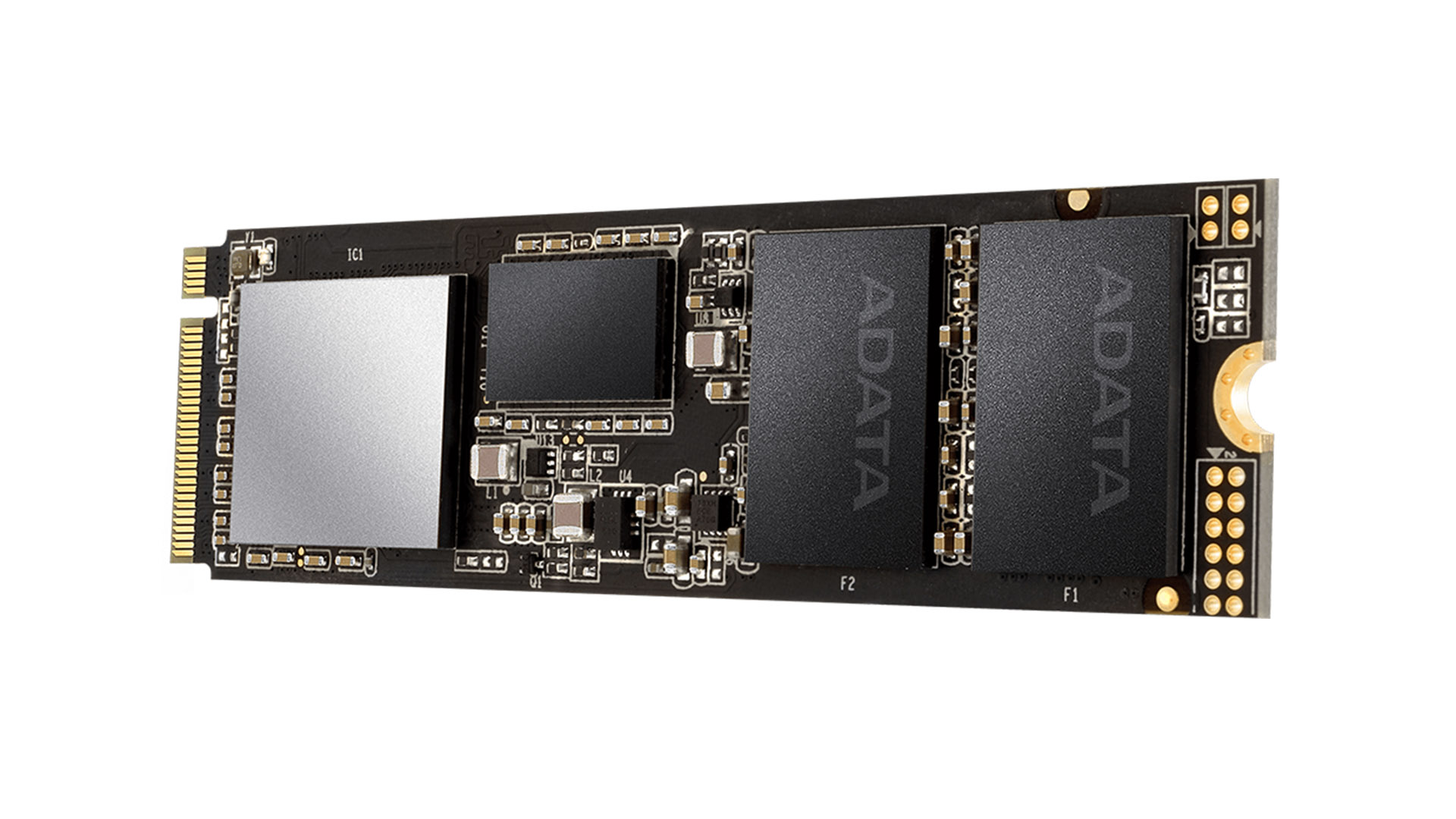 Check Prices
Check Prices ADATA XPG SX8200 Pro 1TB
The best SSD for gaming is the ADATA XPG SX8200 Pro 1TB.
Costing just a little more than the price of the 500GB Samsung 970 EVO Plus – our previous pick as the best SSD – you can get a drive that’s twice the size, with a 5 year warranty and close enough performance that it makes no difference.
These aren’t some bargain basement bits ADATA has picked for its XPG SX8200 Pro drive, we’re talking some of the latest 64-layer 3D TLC NAND from Micron and the excellent Silicon Motion SM2262EN memory controller looking after it all. Somehow ADATA has undercut the competition and us PC gamers are the winners, with an SSD that’ll shrink loading times in the best PC games.
What we like Near half the price of the competition
Excellent components
Super quick
| ADATA XPG SX8200 Pro 1TB specs | |
| Controller | Silicon Motion SM2262EN |
| Memory | Micron 64-layer 30 TLC |
| Socket | M.2 (NVMe) |
| Capacity | 256GB, 512GB, 1TB, 2TB |
| Seq. read/write | 3,500MBps/3,000MBps |
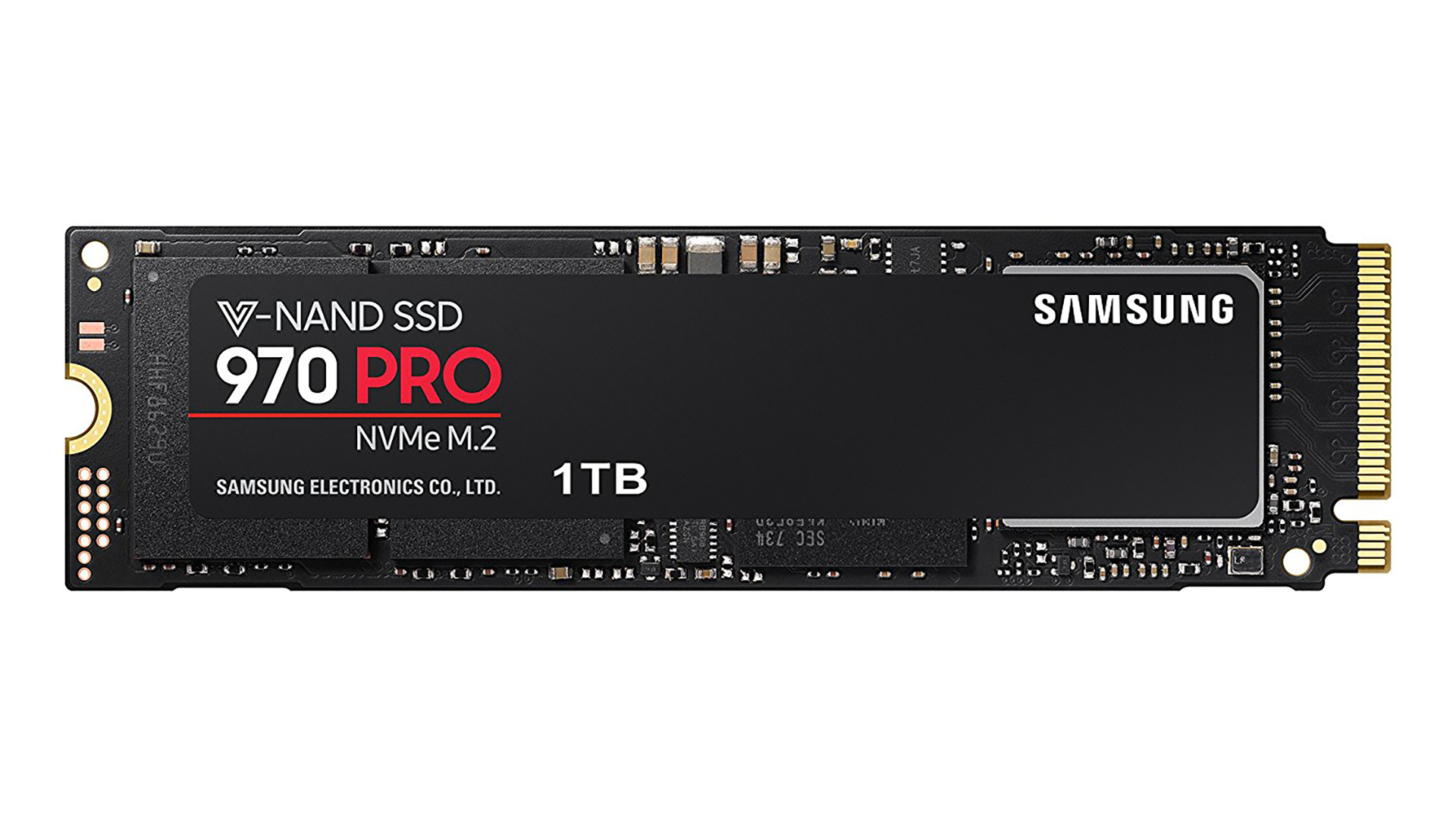 Check prices
Check pricesSamsung 970 Pro 1TB
The best NVMe SSD is the Samsung 970 Pro 1TB.
At least one Samsung SSD was always going to make it onto this list. The question is: if the Samsung 970 EVO is able to post almost the same benchmarks as the 970 Pro why should you spend the extra cash? For most users there’s little need for a pro-level SSD, but if you want the absolute fastest solid-state drive around then the 970 Pro is the one to go for. It’s got slightly lower maximum sequential read/write speeds than the 970 EVO, but the 970 Pro will outlast its technically snappier sibling.
The Pro and EVO both have identical 5 year warranties, although the Pro has an endurance rating of 1,200TB, while the 1TB EVO has 600TB and the 500GB version only 300TB. If you’re running a serious workhorse of a machine, one that’s churning through large amounts of data continuously, you’re going to want to opt for the locked-in reliability of the 970 Pro.
What we like Continuous speed under load
Best-in-class read/write performance
Impressive endurance
| Samsung 970 Pro 1TB specs | |
| Controller | Samsung Phoenix |
| Memory | Samsung 2-bit MLC |
| Socket | M.2 (NVMe) |
| Capacity | 512GB, 1TB |
| Seq. read/write | 3,500MBps/2,700MBps |
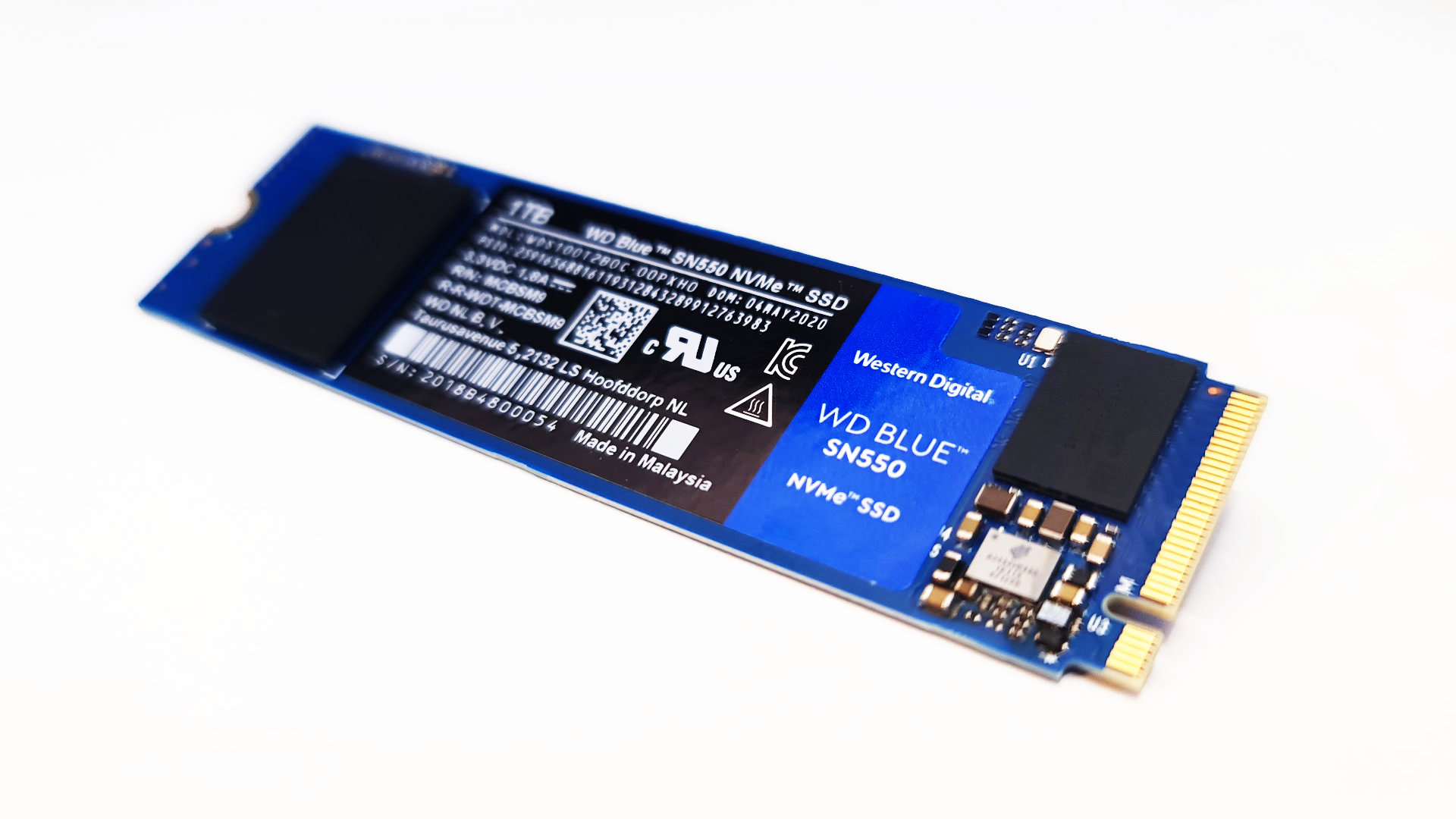 Check Prices
Check PricesWD Blue SN550 1TB
The best budget SSD is the WD Blue SN550 1TB.
WD is here to show that you can, in fact, have it all, as the Blue SN550 NVMe SSD boasts 1TB of storage, a solid 600TBW endurance, and respectable read and write speeds for the lowest price we’ve seen. Of course, it’s not the fastest drive out there, but it’s hands down the best you can get under $100 without sacrificing capacity, speed, or both.
Through clever engineering, it runs cooler than most at 59°C because the SanDisk 96L TLC NAND flash package has been moved further away from the in-house built controller, giving room for each component to flex their muscles without breaking a sweat. At just ten cents per gigabyte, you’d be hard pressed to find another NVMe SSD that can keep up at this price.
What we like Full x4 PCIe 3 interface
Stunning price/performance
600TBW endurance
| WD Blue SN550 1TB specs | |
| Controller | WD in-house |
| Memory | SanDisk 96L TLC |
| Socket | M.2 (NVMe) |
| Capacity | 250GB, 500GB, 1TB, 2TB |
| Seq. read/write | 2,400MBps/1,950MBps |
Read the PCGamesN WD Blue SN550 review for our full verdict and score.
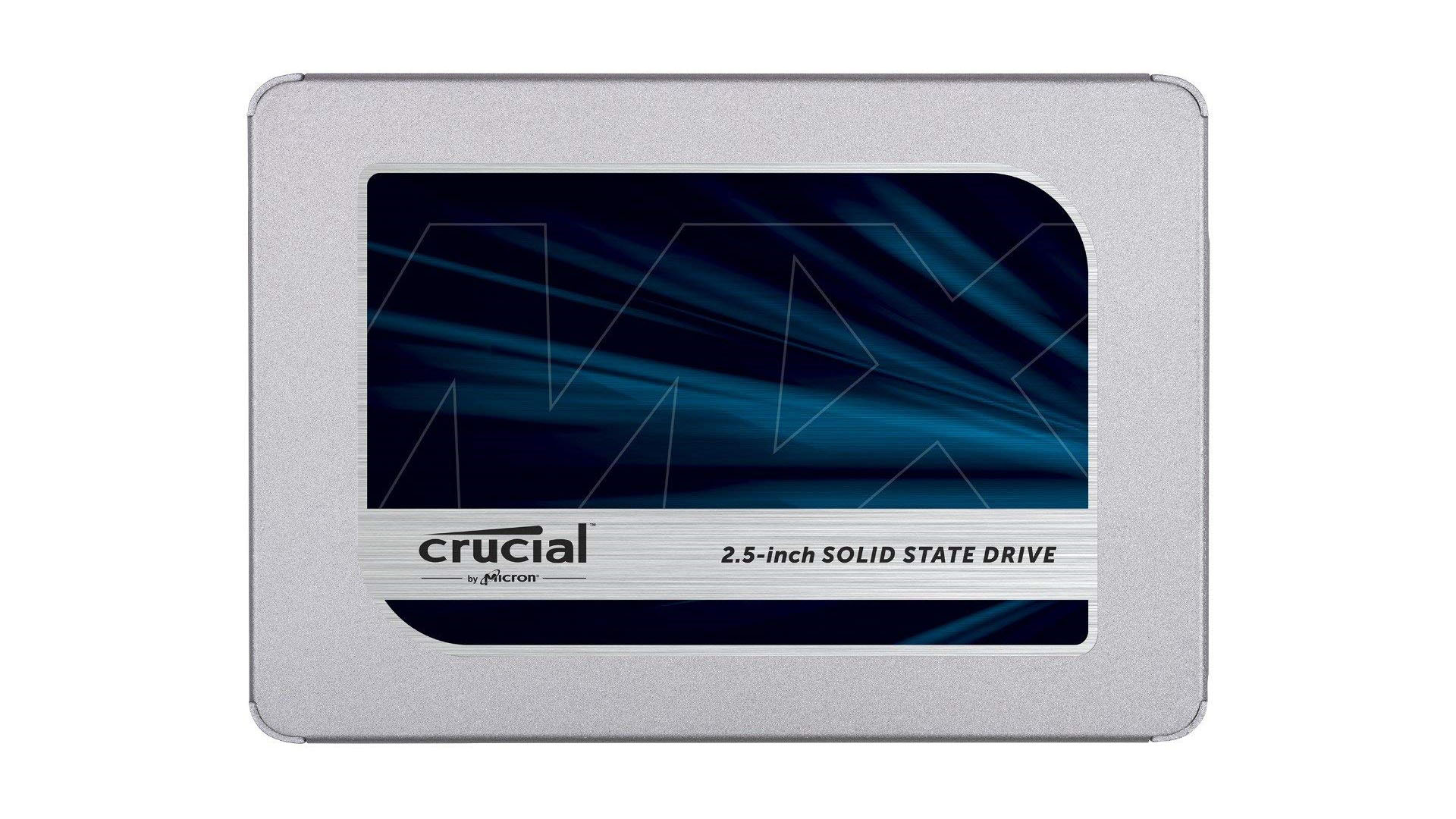 Check prices
Check pricesCrucial MX500 500GB
The cheapest SSD is the Crucial MX500 500GB.
Samsung and Addlink might currently rule the roost at the top of the solid-state tech tree, but Crucial is able to give them a bit of a headache at the more affordable SATA SSD level.
The MX500 is a fair amount cheaper than our pick for the best budget SSD, and should be your go-to if you’re wanting the cheapest SSD possible, without comrpomising on quality. Because of its Micron parent company, Crucial is able to offer SSDs using its own high-quality memory for a great price. The MX500 seriously undercuts the competing 860 EVO, and is able to offer almost identical SSD performance – that’s not surprising given the speed limit imposed by the old SATA interface. It’s not strictly the cheapest SSD, but it’s the cheapest one that we can recommend as a worthwhile, quality purchase.
What we like Competitive price
Top read/write performance for SATA
Good endurance
| Crucial MX500 500GB specs | |
| Controller | SiliconMotion SM2258 |
| Memory | Micron 64-layer 3D TLC |
| Socket | SATA (AHCI) |
| Capacity | 250GB, 500GB, 1TB, 2TB |
| Seq. read/write | 560MBps/510MBps |
Read the PCGamesN Crucial MX500 review for our full verdict and score.
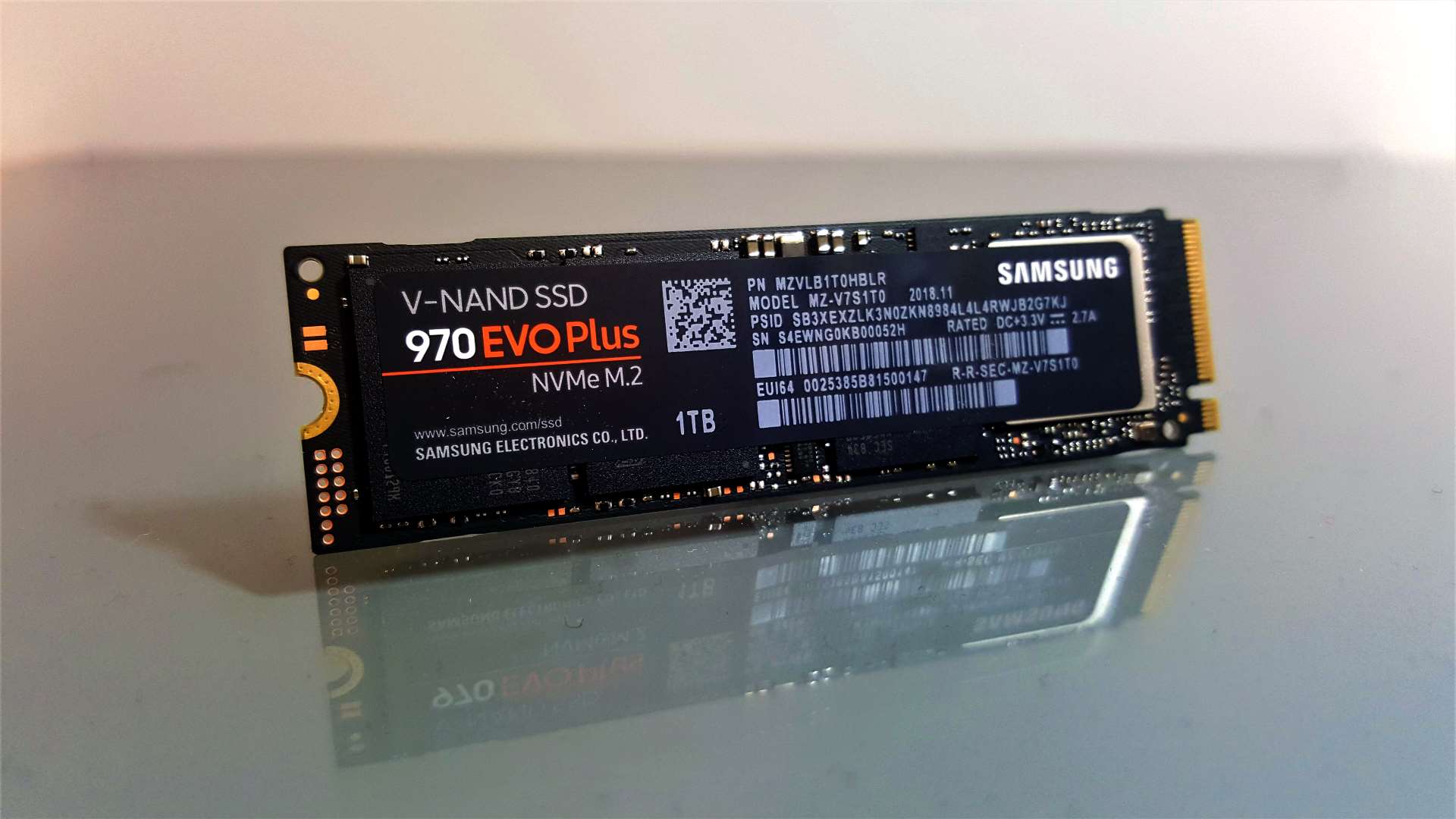 Check prices
Check pricesSamsung 970 EVO Plus 500GB
The best 500GB SSD is the Samsung 970 EVO Plus 500GB.
Here’s another Samsung SSD for you. The Samsung 970 EVO Plus marked the last PCIe 3.0 SSD before we all moved onto the higher-spec PCIe 4.0 drives introduced with AMD’s 3rd Gen Ryzen. The 970 EVO Plus launched at almost half the price of the original thanks to a drastic drop in memory pricing – a value the SSD has managed to maintain throughout its lifespan.
So you have an SSD which is generally faster, especially in the write performance enabled by that enhanced Phoenix controller, and one that is at least the same price as the drive that it is replacing. That’s how you do iterative hardware updates, people.
What we like Same price as 970 EVO
Higher performance
Improved endurance
| Samsung 970 EVO Plus 500GB specs | |
| Controller | Samsung Phoenix |
| Memory | Samsung 3-bit MLC |
| Socket | M.2 (NVMe) |
| Capacity | 250GB, 500GB, 1TB, 2TB |
| Seq. read/write | 3,500MBps/3,300MBps |
Read the PCGamesN Samsung 970 EVO Plus review for our full verdict and score.
 Check prices
Check pricesSamsung 860 EVO 500GB
The best SATA SSD is the Samsung 860 EVO 500GB.
The latest Samsung SATA SSD shows the current thinking from the storage kingpin is that even if you can’t massively boost performance you can beef up the endurance and warranty levels thanks to mature NAND memory tech. And while SATA SSDs don’t hold up against an M.2 SSD using NVMe technology, they’re a heck of a lot cheaper – useful if you’re going for a big capacity SSD, to store large games like Cyberpunk 2077 without spending hundreds.
The 860 EVO’s 3-bit MLC is at the stage where Samsung can offer a full 5 year warranty on this SATA SSD. It’s also one of the fastest SATA drives on the market, but not much more so than the old 850 EVO. And while Crucial’s MX500 is cheaper, the 860 EVO has almost double the endurance.
What we like One of the fastest SATA drives
Fantastic endurance
Five year warranty
| Samsung 860 EVO 500GB specs | |
| Controller | Samsung MJX |
| Memory | Samsung 3-bit MLC |
| Socket | SATA (AHCI) |
| Capacity | 250GB, 500GB, 1TB, 2TB, 4TB |
| Seq. read/write | 550MBps/520MBps |
Read the PCGamesN Samsung 860 EVO review for our full verdict and score.
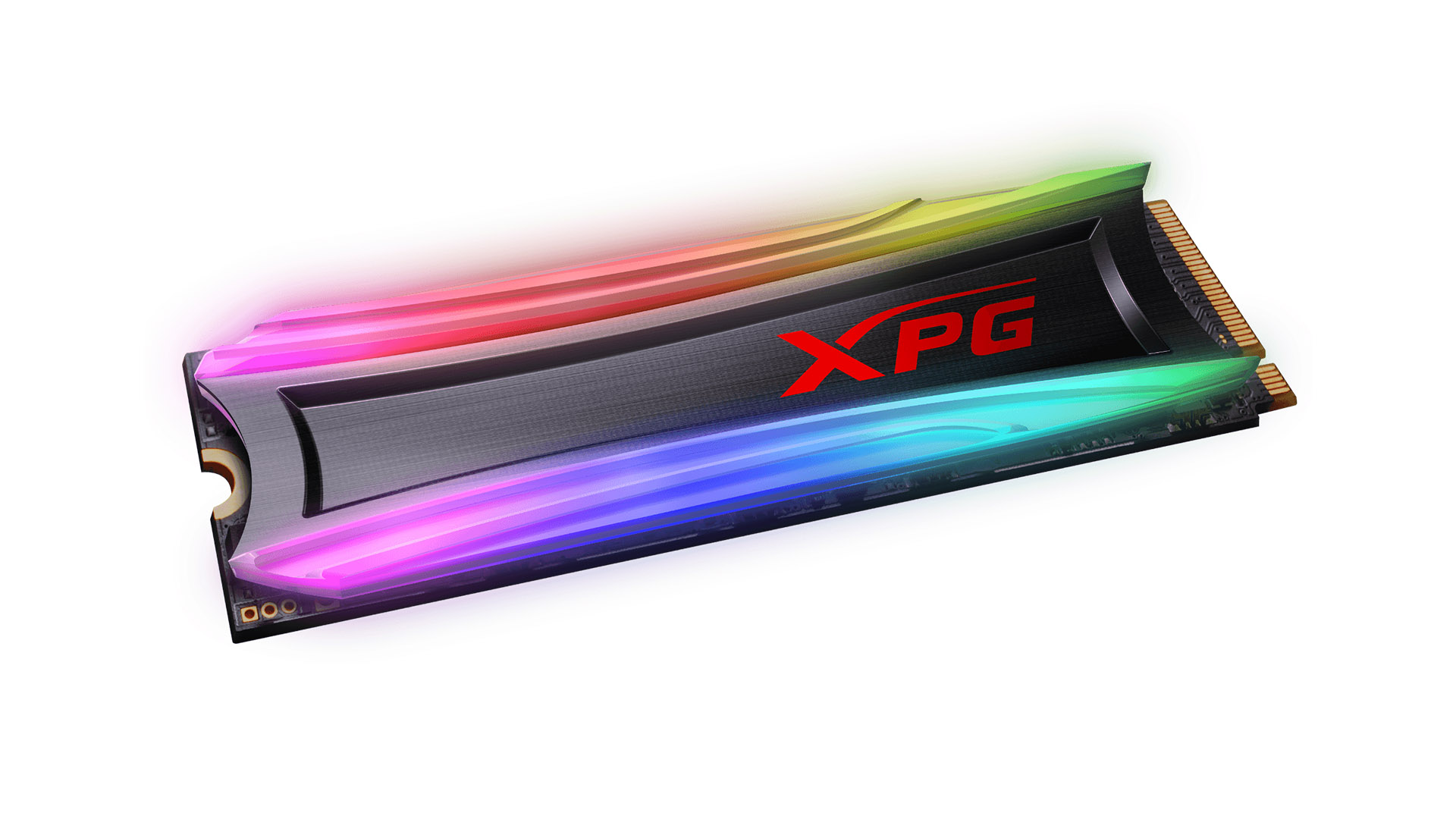 Check Prices
Check Prices ADATA XPG Spectrix S40 RGB 1TB
The best RGB SSD is the ADATA XPG SPECTRIX S40 RGB 1TB.
SSDs usually aren’t the flashiest of components, often taking a back seat to graphics cards, the best CPU coolers, and RAM. If you don’t want want to hide your M.2 drive under a shroud, however, the ADATA XPG SPECTRIX S40 RGB is the latest PC component to be RGB’d, with its strikingly bright and customisable heatsink.
Underneath the albeit pointless bling, you’re still getting superb speeds that mirror our top pick, AES-256-bit encryption to keep your data secure, and a five year warranty, all at a competitive price.
What we like Best looking SSD with RGB
Five year warranty
640TBW endurance
| ADATA XPG SPECTRIX S40 RGB 1TB specs | |
| Controller | Realtek RTS5762 |
| Memory | Micron 64-layer 30 TLC |
| Socket | M.2 (NVMe) |
| Capacity | 250GB, 512GB, 1TB, 2TB, 4TB |
| Seq. read/write | 3,500MBps/3,000MBps |
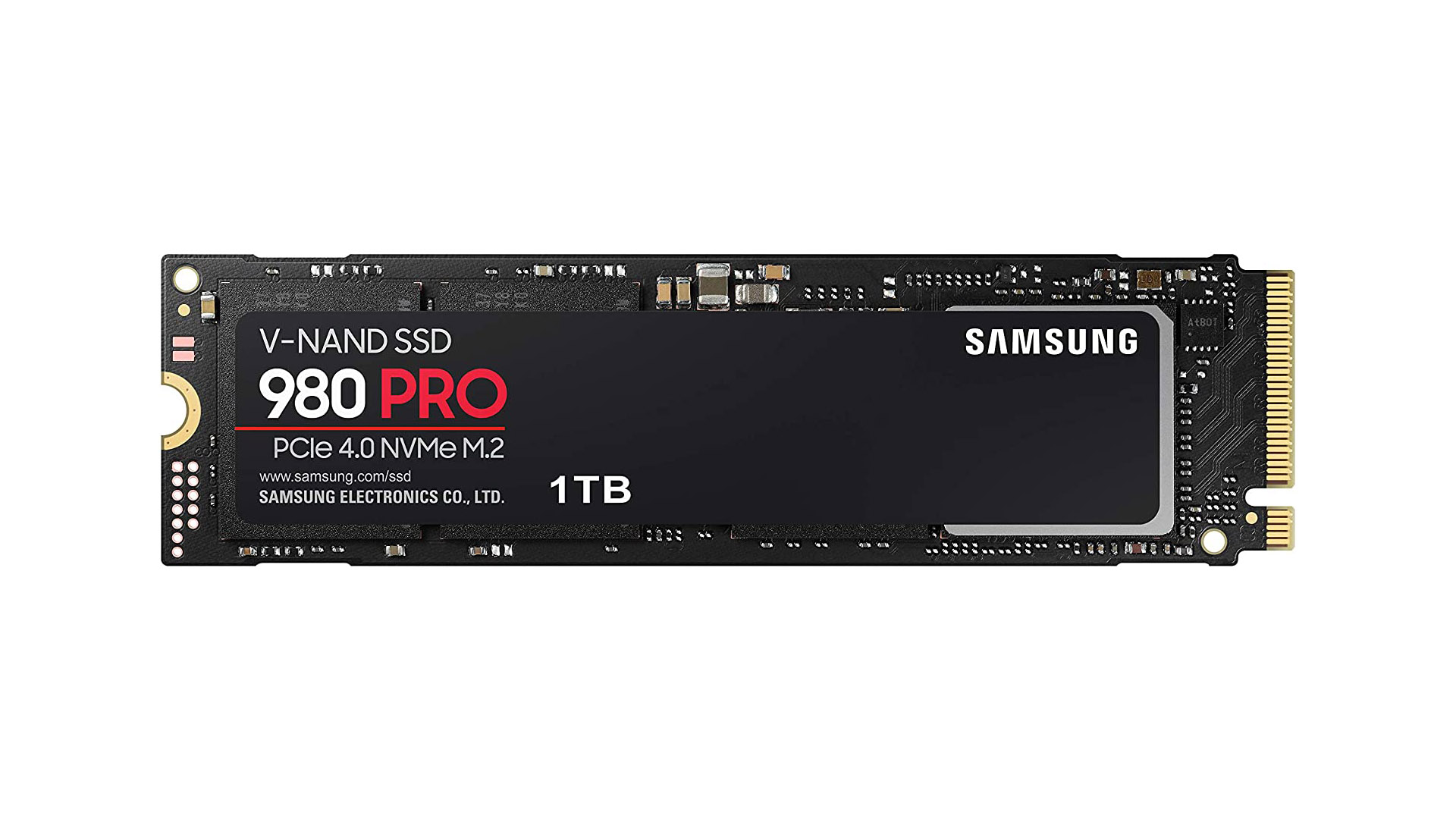 Check Prices
Check Prices Samsung 980 Pro 1TB
The best PCIe 4.0 SSD is the Samsung 980 Pro 1TB.
The Samsung 980 Pro is the company’s first leap into PCIe 4.0 technology and its speeds don’t disappoint. It’s leaps and bounds above its competitors with staggering read and write speeds – provided you’re using the new bus.
This is all thanks to Samsung’s new Elpis controller, designed in-house alongside its V-NAND and DRAM to make full use of PCIe 4.0. Of course, this currently requires AMD’s Ryzen 3000 or 5000 series to run until the release of Intel’s Rocket Lake-S chips, but it’s one to compliment any upgrade you might have in store.
What we like Fastest SSD on PCIe 4.0
Quickest random 4k read/write
600TBW endurance
| Samsung 980 Pro 1TB specs | |
| Controller | Samsung Elpis |
| Memory | Samsung 3-bit MLC |
| Socket | M.2 (NVMe) |
| Capacity | 250GB, 500GB, 1TB |
| Seq. read/write | 7,000MBps/5,000MBps |
Are PCIe 4.0 SSDs important for gaming?
Here’s our take on whether next-gen PCIe 4.0 game load times are important for gaming. PCGamesN also has a full article discussing whether PCIe 4.0 SSDs are better for gaming.

SSD buying guide
There’s never been a better time to make the move to an SSD for your main rig. We’re getting to the stage where it no longer has to be a tiny drive that can only fit the barest of OS essentials either – pretty massive drives are available for affordable prices now. Hell, you can even buy the fastest 500GB NVMe SSDs for less than $150.
Samsung has been the undisputed king of solid-state storage for a long time – It’s been at the game long enough to know how to match a quality own-brand controller with its own-brand NAND flash memory, and make it for an affordable price. That’s why the 970 EVO comes close to being our SSD pick ever since it launched.
But Addlink, a little-known brand when compared to Samsung, has seemingly come out of nowhere to steal the throne. With both its 1TB and 512GB versions of the S70, you’re getting quality components almost capable of keeping up with the speedy Samsung drives, all for a stupidly small cost.
Micron also has something to say. Like Samsung, it can mix its own memory with refined memory controllers, and ship complete drives for a great price. They don’t quite have the Samsung performance, but they’re not far off.
In ‘weird and wonderful’ land, Intel is also making great strides with its 3D XPoint memory. But although it delivers unprecedented 4k random performance, it is still mighty expensive… a potential ‘future tech’ then. As is QLC memory, which offers both value and capacity, and could spell the end for spinning platters in our PCs once the tech matures.
